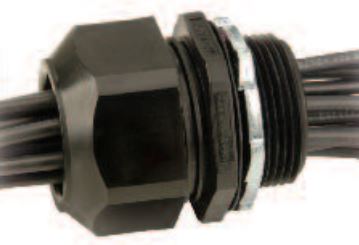
Industries widely use cordgrips as vital components to secure and protect electrical cables and wires at the point where they enter an enclosure or a piece of equipment. These devices ensure a firm hold on the cable, preventing displacement and providing a reliable seal against environmental factors such as dust, moisture, and dirt. This article delves into the functionality, applications, and unique characteristics of cordgrips, highlighting their importance in maintaining operational integrity and safety in industrial environments.
Understanding Cordgrips
What are Cordgrips?
Cordgrips, also known as cable glands or cord connectors, are designed to attach and secure the end of an electrical cable to the equipment. A typical cordgrip consists of a body, clamping nut, and sealing components that together provide strain relief and protect the integrity of the cable connection against external stresses. These fittings are crucial in preventing cable pull-out, controlling arc of bend, and ensuring a tight seal that blocks contaminants that could potentially damage the wiring.
Industrial Applications of Cordgrips
Cordgrips find extensive use across a broad spectrum of industries due to their robustness and versatility:
- Manufacturing: Manufacturing plants use cordgrips on machinery and control panels to ensure stable and secure connections, especially where heavy vibration or movement might dislodge unprotected cables.
- Telecommunications: They are essential in telecommunications for securing feeder, drop, and control cables, providing a reliable seal to protect sensitive communication lines from environmental damage.
- Utilities and Energy: Cordgrips offer a critical solution for utility providers, particularly in the power and renewable energy sectors, by managing cable entries into electrical transformers, solar panels, and wind turbines, ensuring all connections are safeguarded against weather and mechanical stress.
- Maritime and Offshore: The maritime and offshore industries rely on heavy-duty cordgrips to maintain the integrity of electrical systems aboard ships and oil platforms, where exposure to saltwater and extreme conditions is a constant challenge.
Unique Characteristics and Qualities
Materials and Design: Cordgrips are available in a variety of materials, including nylon, brass, stainless steel, and aluminum, to suit different environmental conditions and industry requirements. Some cordgrips are designed with advanced features like electromagnetic interference (EMI) shielding, which crucially protects sensitive electronic equipment from interference.
Certifications: Many cordgrips come with specific certifications, such as IP ratings, which indicate their level of effectiveness against intrusion from solids and liquids. This is particularly important in industries where equipment must uphold stringent safety and reliability standards.
Ease of Installation: Modern cordgrips feature designs that enable easy installation, allowing for quick and secure assembly without requiring extensive tools or technical skills. This convenience reduces downtime and increases efficiency during maintenance and setup processes.
Conclusion
In conclusion, cordgrips are indispensable tools in the industrial world, offering essential protection and stability for electrical cables across a myriad of applications. Their ability to adapt to various environmental conditions, coupled with their robust construction and ease of use, makes them a fundamental component in ensuring the safety, reliability, and efficiency of electrical systems in any industrial setting. As technology and industry requirements evolve, the role of cordgrips continues to expand, reinforcing their importance in modern industrial operations.

